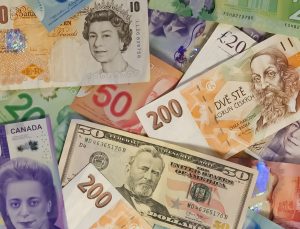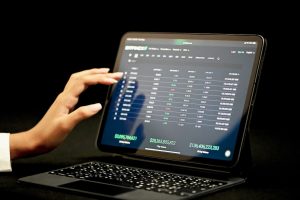Forex trading involves buying and selling currencies with the aim of making a profit from the fluctuations in their value. To make informed decisions, traders rely on price and trade data that is displayed in various formats. In this article, we will explore how to display price and trade data for forex.
1. Candlestick Charts
Candlestick charts are the most popular format for displaying price data in forex trading. They provide a visual representation of the price movement of a currency pair over a given period of time. Each candlestick represents a specific time frame, such as 1 hour, 4 hours, or 1 day. The body of the candlestick represents the opening and closing price, while the wicks or shadows represent the high and low prices during that time frame.
Candlestick charts can be customized to show different time frames and indicators, such as moving averages, Bollinger Bands, and Relative Strength Index (RSI). Traders can use these indicators to identify trends and potential trading opportunities.
2. Line Charts
Line charts are another commonly used format for displaying price data in forex trading. They show the closing prices of a currency pair at regular intervals, such as every hour or every day. Line charts are simpler than candlestick charts and provide a quick overview of the price movement over a given period of time.
Line charts can be customized to show different time frames and indicators, such as trend lines and support and resistance levels. Traders can use these indicators to identify key levels for entering and exiting trades.
3. Bar Charts
Bar charts are a less popular format for displaying price data in forex trading. They provide a visual representation of the opening, high, low, and closing prices of a currency pair over a given period of time. Each bar represents a specific time frame, such as 1 hour, 4 hours, or 1 day.
Bar charts can be customized to show different time frames and indicators, such as volume and moving averages. Traders can use these indicators to identify trends and potential trading opportunities.
4. Market Depth
Market depth, also known as level 2 data, is a format for displaying trade data in forex trading. It shows the bid and ask prices of a currency pair, as well as the volume of orders at each price level. This information can be used to identify support and resistance levels and potential trading opportunities.
Market depth can be displayed in a separate window or integrated into a trading platform. Traders can use this information to make informed trading decisions based on the supply and demand of a currency pair.
In conclusion, displaying price and trade data for forex requires a combination of visual representation and numerical data. Candlestick charts, line charts, and bar charts provide a visual representation of the price movement of a currency pair over a given period of time. Market depth provides numerical data on the bid and ask prices and volume of orders for a currency pair. Traders can use these formats to identify trends and potential trading opportunities. It is important to customize these formats to suit individual trading styles and strategies.





